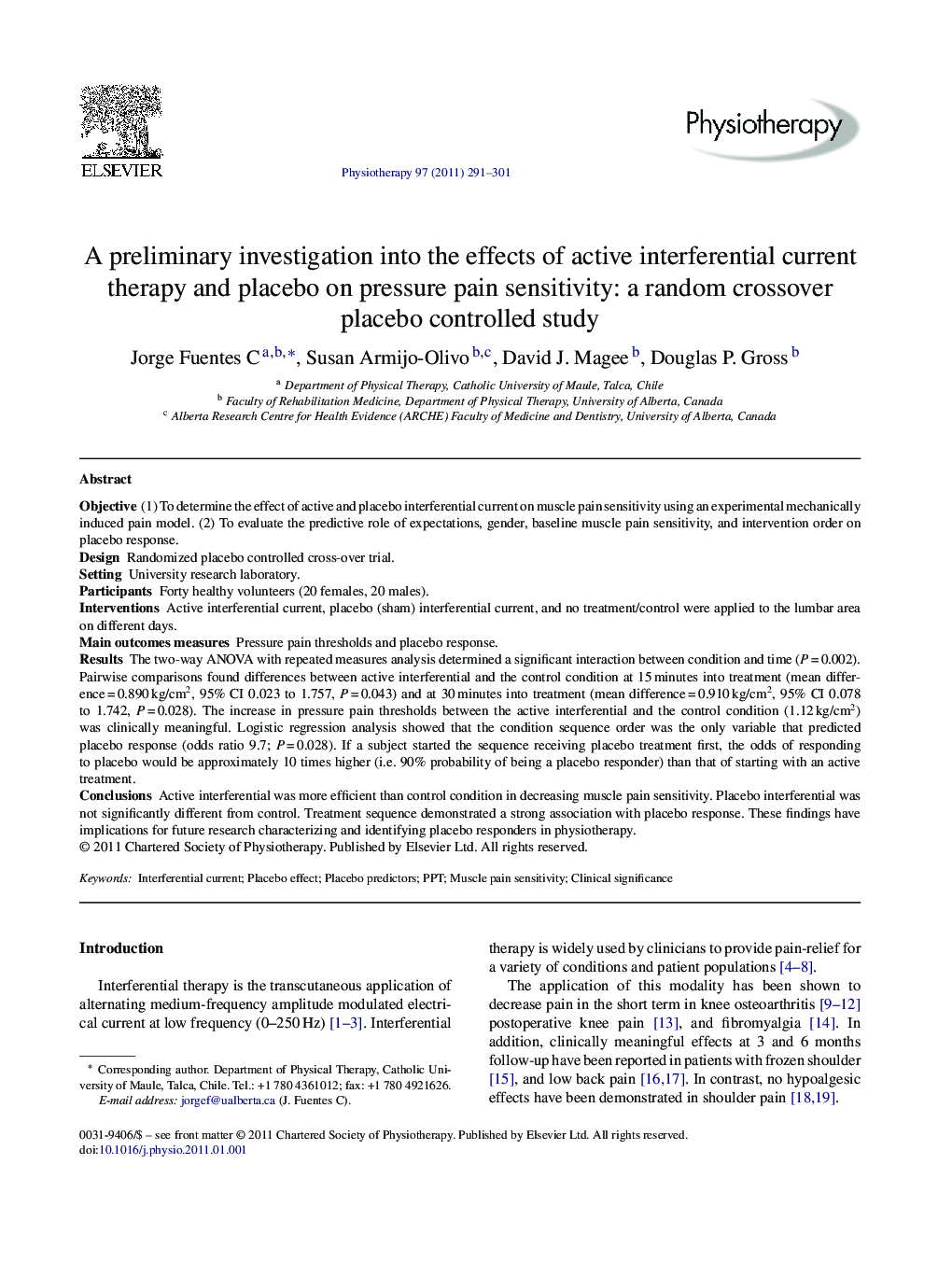| Article ID | Journal | Published Year | Pages | File Type |
|---|---|---|---|---|
| 2627404 | Physiotherapy | 2011 | 11 Pages |
Objective(1) To determine the effect of active and placebo interferential current on muscle pain sensitivity using an experimental mechanically induced pain model. (2) To evaluate the predictive role of expectations, gender, baseline muscle pain sensitivity, and intervention order on placebo response.DesignRandomized placebo controlled cross-over trial.SettingUniversity research laboratory.ParticipantsForty healthy volunteers (20 females, 20 males).InterventionsActive interferential current, placebo (sham) interferential current, and no treatment/control were applied to the lumbar area on different days.Main outcomes measuresPressure pain thresholds and placebo response.ResultsThe two-way ANOVA with repeated measures analysis determined a significant interaction between condition and time (P = 0.002). Pairwise comparisons found differences between active interferential and the control condition at 15 minutes into treatment (mean difference = 0.890 kg/cm2, 95% CI 0.023 to 1.757, P = 0.043) and at 30 minutes into treatment (mean difference = 0.910 kg/cm2, 95% CI 0.078 to 1.742, P = 0.028). The increase in pressure pain thresholds between the active interferential and the control condition (1.12 kg/cm2) was clinically meaningful. Logistic regression analysis showed that the condition sequence order was the only variable that predicted placebo response (odds ratio 9.7; P = 0.028). If a subject started the sequence receiving placebo treatment first, the odds of responding to placebo would be approximately 10 times higher (i.e. 90% probability of being a placebo responder) than that of starting with an active treatment.ConclusionsActive interferential was more efficient than control condition in decreasing muscle pain sensitivity. Placebo interferential was not significantly different from control. Treatment sequence demonstrated a strong association with placebo response. These findings have implications for future research characterizing and identifying placebo responders in physiotherapy.
